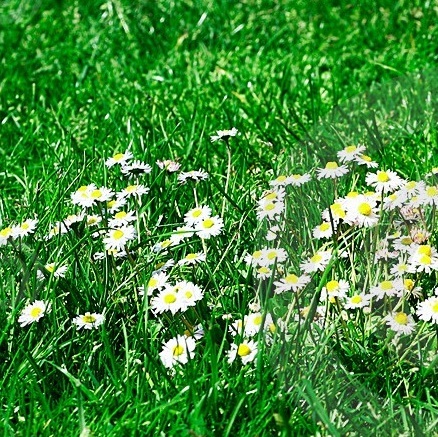Invaders target nation’s lawns, requiring “Shock and Awe” strategy, say experts

A Humor Times special report
When pundits debate national security in the media these days, they’re usually referring to threats posed by Iraq, Afghanistan, Pakistan and North Korea. No doubt very important stuff, but every spring we face a growing insurgency right here at home: the massive invasion of unsightly weeds on the nation’s lawns.
“I’m at my wits end,” says Ernest Sanders of Atlanta, Georgia, who loves a uniform green lawn. “The weeds are the worst I’ve ever seen them, despite the gallons and gallons of weed killer I’ve saturated my yard with.”
According to U.S. Department of Agriculture, annual turf and lawn maintenance altogether is a $30 billion industry. However, over 400 different species of weeds and insects are now resistant to some or all pesticides traditionally used to battle them.
The extent of the problem is “rather startling” says Robert Metcalf of the University of Illinois. “It makes you think we’re doing something wrong.”
Indeed. Something is wrong, and according to Sam Restinthall, a lawn care specialist in Los Angeles, California, it is that we have not committed ourselves fully to the fight.
“We need a real ‘Shock and Awe’ strategy, to rid our nation of these foreign invaders, once and for all,” says Restinthall. “If the $8.9 billion we spend annually on lawn chemicals isn’t doing the job, let’s dump $20 billion on it. Talk about a great stimulus plan! We in the lawn care industry could use it, I’ll tell ya,” he said.
But radical capitalist-hating organic types say we shouldn’t be “poisoning” our lawns. They say weeds won’t thrive in rich soil, so people should work on making their soil healthy.
“Taller blades help shade the roots from the heat, so set the mower blade height to 3 inches, or more if your mower has a higher setting,” says Charlotte Berkenshire, organic lawn care expert from Lubbock, Texas.
“Buy sugar. Apply it to your lawn at the rate 1 pound sugar per 250 sq. ft. of lawn. Water it in well. Your soil has beneficial microbes that work round the clock, all year round, enriching the soil. Fertilizers, weed killers etc, kill these microbes. Sugar keeps them alive,” she says.
While that sounds sweet, Restinthall says it’s “living in fantasy land.” “She probably recommends smoking a big joint before mixing up the sugar water too,” he warned, “and that, as we all know, may be pleasant on a sunny day, but it is illegal.”
According to Monsanto, the nation’s leading pesticide manufacturer, citizens should be buying their genetically modified “Happy Grass” product, and using five tons of Round-Up each year on an average size lawn.
“If you want a stress-free lawn, you’ve got to use 21st century science,” said Ronald Dorkendurf, a consumer relations expert with Monsanto. “Our Happy Grass will grow green and strong, and is impervious to Round Up – so apply lots and lots of it. Nothing will live on your lawn but grass, it’s so easy!”
When asked about the effect of all that pesticide on pets and children playing on the lawn, Dorkendurf said, “Everyone knows lawns are for looking at, not playing on. Get your kids back inside on their video games where they belong, and put that dog on a leash!”
- Democratic Response Much Too Tepid - April 1, 2025
- Humor Times 34th Anniversary Issue is OUT: the Political Satire Revolution Continues! - March 6, 2025
- Book Review: ‘The Mind of a Horse’ - December 26, 2024

